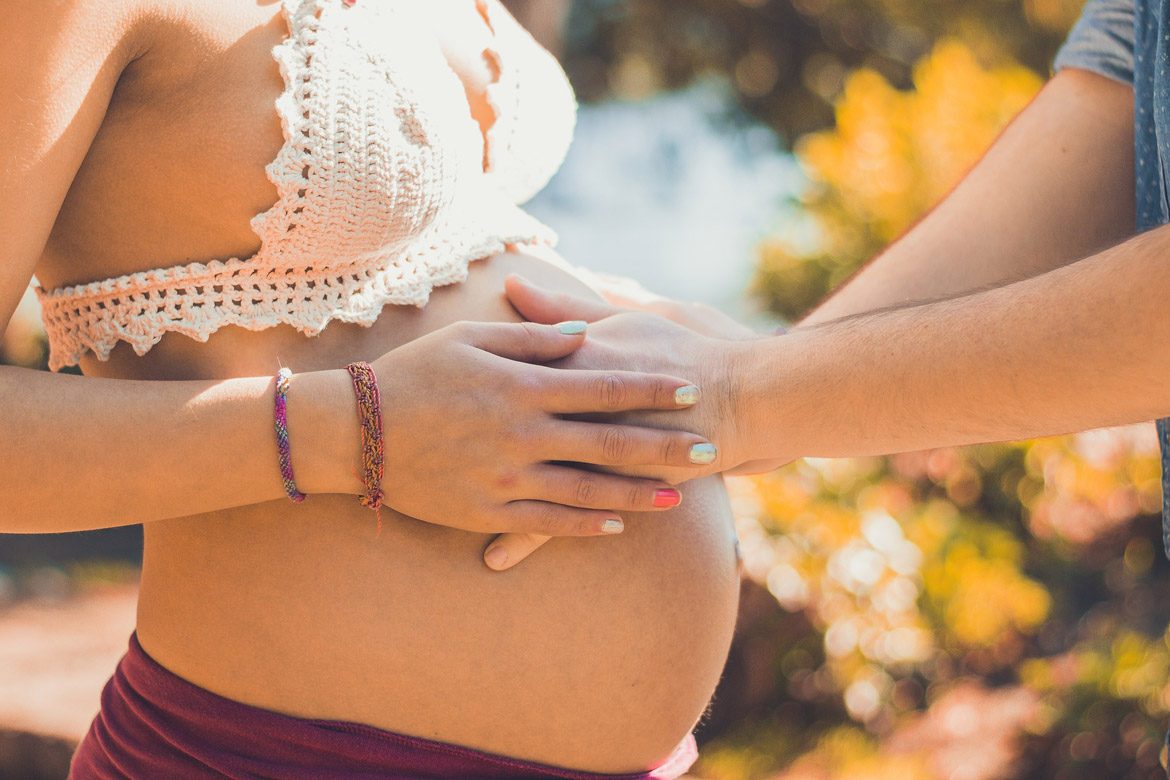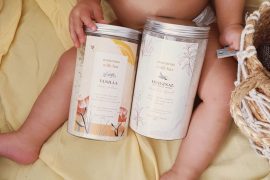By Jo Arnold
Alongside our homebirth preparations, trying to prepare my toddler Primrose for the new baby’s arrival and gearing up for the actual birth of this baby, the postpartum stage of pregnancy has been at the forefront of my mind.
Those of you who’ve been with us since the early days of Tales from the Mother Side may remember my posts about life with a newborn, the pointless pursuit of perfection in motherhood, being a bit of a martyr and the importance of self-care. Oh, and the double-edged sword that is social media… so helpful yet potentially really damaging to vulnerable new mamas.
So, I’ve learnt from those lessons. With the exception of hormones, and a toddler’s reaction to the new arrival, neither of which I can control, I’m determined things WILL be different this time…
The Practical
Guests: In true ‘first baby’ style, we were daft when it came to guests last time. Minutes after we walked in the door, our parents were there. Admittedly, they brought food, which was lovely, but I spent the entire time thinking about how Primrose wasn’t even 12 hours old and I just wanted to go to bed whilst she was in that ‘I’ve just been born so I’m sleeping, why aren’t you?’ stage. We had FAR too many guests in those early weeks, which might go some way to explaining a rocky start to breastfeeding and why my anxiety went through the roof!
This time, it’s no guests until we’re really ready, especially now we have a toddler to think about too – this will be such an adjustment for her.
Social Media: There are some great memes that I’ve seen shared by friends on social media, asking that people don’t post ‘CONGRATULATIONS’ messages until parents have announced their baby’s safe arrival. It sounds obvious, but I’ve seen it so many times. You can also change your Facebook setting so posts don’t appear until they’ve been approved by you.
Getting back to ‘normal’: This is worthy of a whole post on its own. The pressure on women to ‘get back to normal’ is immense and totally ingrained in our society. There is a new ‘normal’ once you have a baby. Presumably, in choosing to conceive, carry and birth a baby, you’ve prepared to make changes in your life. However, when you’re bombarded with media images of celebrities ‘bouncing back’ into shape, friends are expecting you to go out for the evening and the world and his wife wants to know when you’re going back to work when your baby is weeks old, it’s hard not to feel worn down.
Society has totally warped our approach to motherhood, quashing our natural maternal instincts. I managed to resist a lot of these pressures last time but certainly felt like I was in a minority. Luckily, I found lots of FB groups full of women who feel the same way.
Realistic expectations/Understanding the fourth trimester: Also the fault of mainstream media – depicting babies as sleeping ALL the time and, if they don’t, leaving them to cry; rarely showing anything related to breastfeeding, unless for comedic purposes (engorged boobs and pumping catatrophes anyone?); showing women ‘out and about’ within days of giving birth, etc etc.
I realise now that all a new baby really needs is love, milk, warmth and to be allowed to get used to its new environment (ie: your home, you, your partner, your other children and pets).
I also have zero expectations this time about sleep or the duration/frequency of feeds – we’ll be going with the flow (so to speak!). I’ve said it before but I wish I’d read The Gentle Sleep Book and either Baby Led Breastfeeding or The Womanly Art of Breastfeeding BEFORE having Primrose. Both would have saved A LOT of tears and anxiety!
In short: babies have no circadian rhythm – don’t expect them to differentiate between night and day. They also feed regularly and, after a week or so, go through a growth spurt, making this even more regular. Fussy evenings in the early days are normal and don’t mean your baby isn’t getting enough milk from you. Trust your baby and your body; both are really bloody clever!
Toddler: We’ve done everything we can to prepare Primrose but we’re expecting her behaviour to change and that she may regress in certain areas. If she takes it in her stride, great! If not, we will work with her to validate her feelings and emotions, to empathise and to support her. The Gentle Parenting Book and blog have some brilliant tips.
Gifts: This is a tricky one. There is no doubt that people are at their most kind and generous when a new baby arrives. The amount of gifts we received when Primrose was born was overwhelming – we struggled to find the space for them all. Cards are absolutely our favourite thing to receive and we kept them all so she can read them when she is older.
This time, we are asking our lovely family and friends to donate money to charity instead of bringing gifts for the baby or for Primrose – we have everything we could possibly need, and so little space, so hope we can make a difference where it matters most.
The Physical
Postpartum pads: Birth may mean a new baby but it also means getting familiar with just about every ‘pad’ going…breast pads, maternity mats (Tip: puppy training pads are the same, and far cheaper!) and postpartum pads. The disposable version of these, which I used last time, were horribly bulky (honestly like a nappy!) and just made me feel sweaty and uncomfortable. Rumour has it that disposable maternity pants are just as grim, and also make a scrunchy sound. Nice.
This time I’ve opted for organic disposable pads for the first few days, plastic and chlorine free. For the following weeks, I’ve researched and purchased CSPs (Cloth Sanitary Products) so the breathable, natural fibre (and eco friendly!) box is ticked. I plan to put a combination of witch hazel (with as low an alcohol content as possible), aloe vera gel and lavender/tea tree oil on them, then keep them cold in the fridge until I need them. Google ‘soothing postpartum pads’ for lots of ‘how to’ guides.
Spray/Peri bottle: There’s no getting away from it – postpartum peeing stings. I imagine stitches only make the pain worse. Take this with you to hospital, fill with warm water each time you need to pee, and use it to pour/spray on your lady parts as you go. Trust us, it makes a massive difference! No bottle? Use a cup or glass. Be sure to wipe/dry properly too – nobody wants a yeast infection on top of everything else!
Herbal bath: There are lots of ‘recipes’ for these online. Just be wary that some ingredients could interfere with milk production – Epsom salts, for example. Last time, I used a combination of sea salt, witch hazel and tea tree oil (with milk, to help disperse the oil and stop it sitting on the top of the water). Others add oats, comfrey, lavender oil… As always, research is the key, and talk to your midwife if in any doubt about what to use. Ideally, you’ll use a large bowl or bidet to mix the ingredient with warm water – in a full size bath, you’d need a lot of each component, which would be expensive! If this is your only option, or if you’d rather not make your own, you can buy pre-mixed bath herbs.
Baby Bottom Spray: It can be used whilst peeing (as above), on postpartum pads (as above, if you don’t have time/energy to make your own), or just as a soothing spritz to ease the discomfort of stiches/tears/episiotomies/haemorrhoids. Keep in the fridge to make it extra-cooling.
Arnica: I didn’t take this last time as I hadn’t researched it enough before giving birth. Some ladies take it from just before they’re due but, after discussion with my midwife, I will start once the placenta is delivered, to minimise bruising, swelling and (hopefully) to reduce the risk of getting another haematoma. Arnica can also relieve some of the discomfort of ‘afterpains’, as your uterus contracts after birth. Again, research is crucial here – there’s a lot of conflicting information online. The most reliable source of information I have found is at britishhomeopathic.org.
Pelvic floor: It would be hypocritical of me to pretend I was good with pelvic floor exercises after having Primrose. I was terrible at remembering. I thought I was ‘back to normal’ after about seven months but getting pregnant again showed me otherwise. I’d like to think I’ll make better use of apps such as Squeezy (the NHS app) or Elvie after this birth – I know this is something I need to be better at!
Vitamins & nutrition: You’ve spent your whole pregnancy religiously taking vitamins and eating well; don’t stop now you’ve had the baby – your body needs help to heal and restore, and you need to feel as well as possible in order to cope with raging hormones, exhaustion and the general feelings of overwhelm. Take a decent multivitamin and, if you’re breastfeeding, look for one specifically designed for nursing mamas.
Now is the time to eat and drink exactly what you like, but your body will be craving healthy, protein and mineral rich foods to make up for their depletion during the final weeks of pregnancy, as well as labour. If you have a ‘village’ on hand (family and friends close by), with any luck, they’ll fill your freezer with wholesome, homecooked meals. Otherwise, consider batch cooking in the weeks before baby arrives. It’s a pretty obvious list: leafy greens, fruit, vegetables, whole grains and pulses, plenty of vitamin C, fish and lean beef. Good snacks for energy include things like nuts, oatcakes with hummus, wholemeal toast with nut butter, porridge (make with oat milk for an extra boost to milk production) and natural yoghurt with berries.
Again, I’m not going to pretend I didn’t eat ALL the cake last time (breastfeeding burns up to 500 extra calories a day – that’s my excuse and I’m sticking to it!), but hubby was very good at making sure I ate well and healthily too, making fruit and oatmilk smoothies each morning and cooking iron and vitamin rich meals at night.
Boobs: There’s no doubt about it, your gals need extra special attention at this time! They’re going to be working hard. Until your milk comes in, usually between days 2-7 (and after), it’s vital to get baby to breast as frequently as possible, as it will stimulate production. This can be exhausting and one ‘bad’ latch can cause cracks and soreness, so caring for them is crucial. Decent nipple cream, regular changes of breast pads and going braless to let air circulate are all vital.
We recently pulled together all our breastfeeding posts into one place, for World Breastfeeding Week, including both our breastfeeding journeys (shaky starts for Jo and Lauren!) and ‘Ready, Steady, Boob’ – a guide to help you prepare for breastfeeding.
See page 2 for the emotional/spiritual side of postpartum care…











